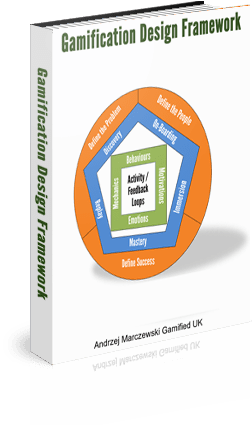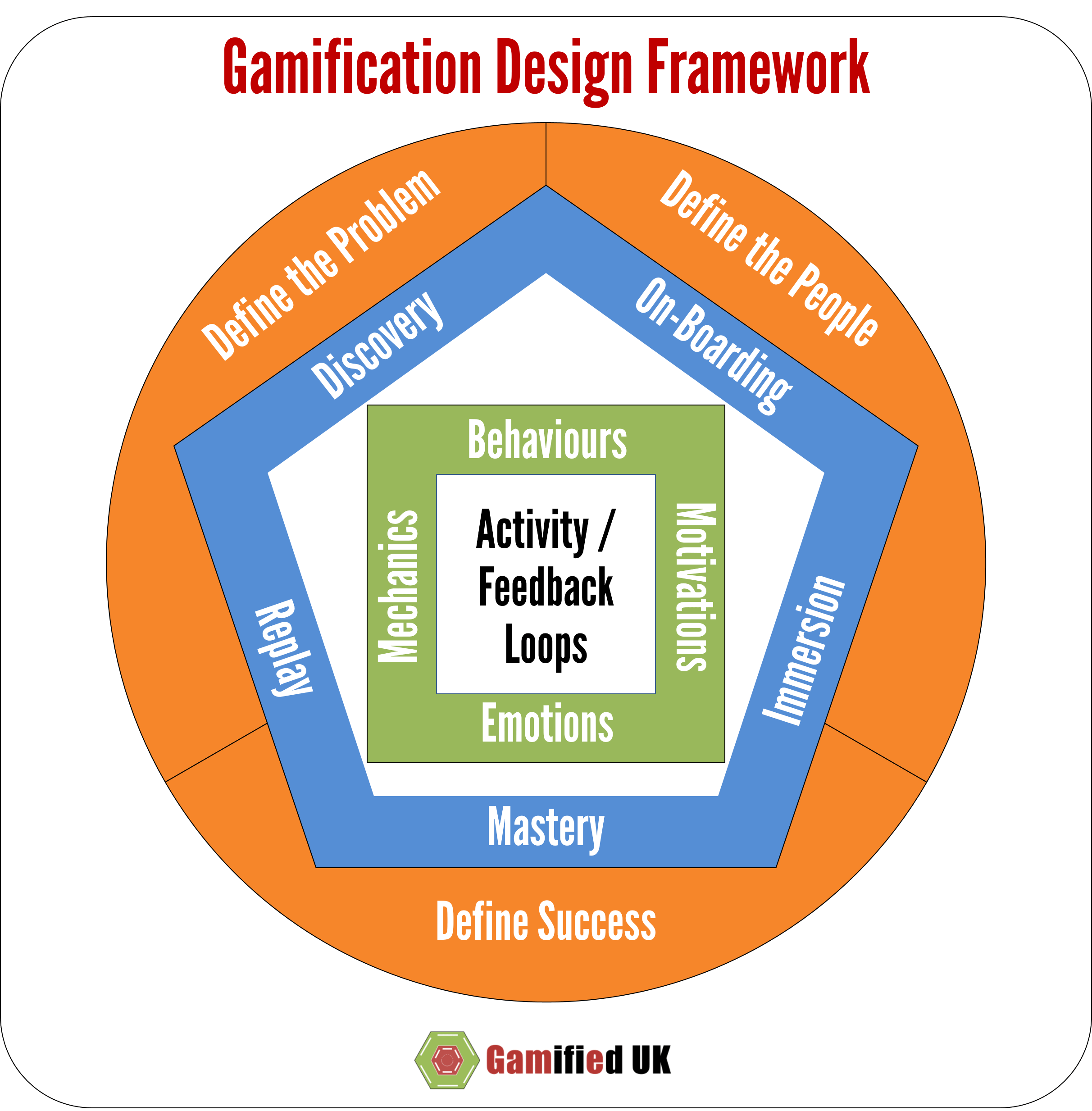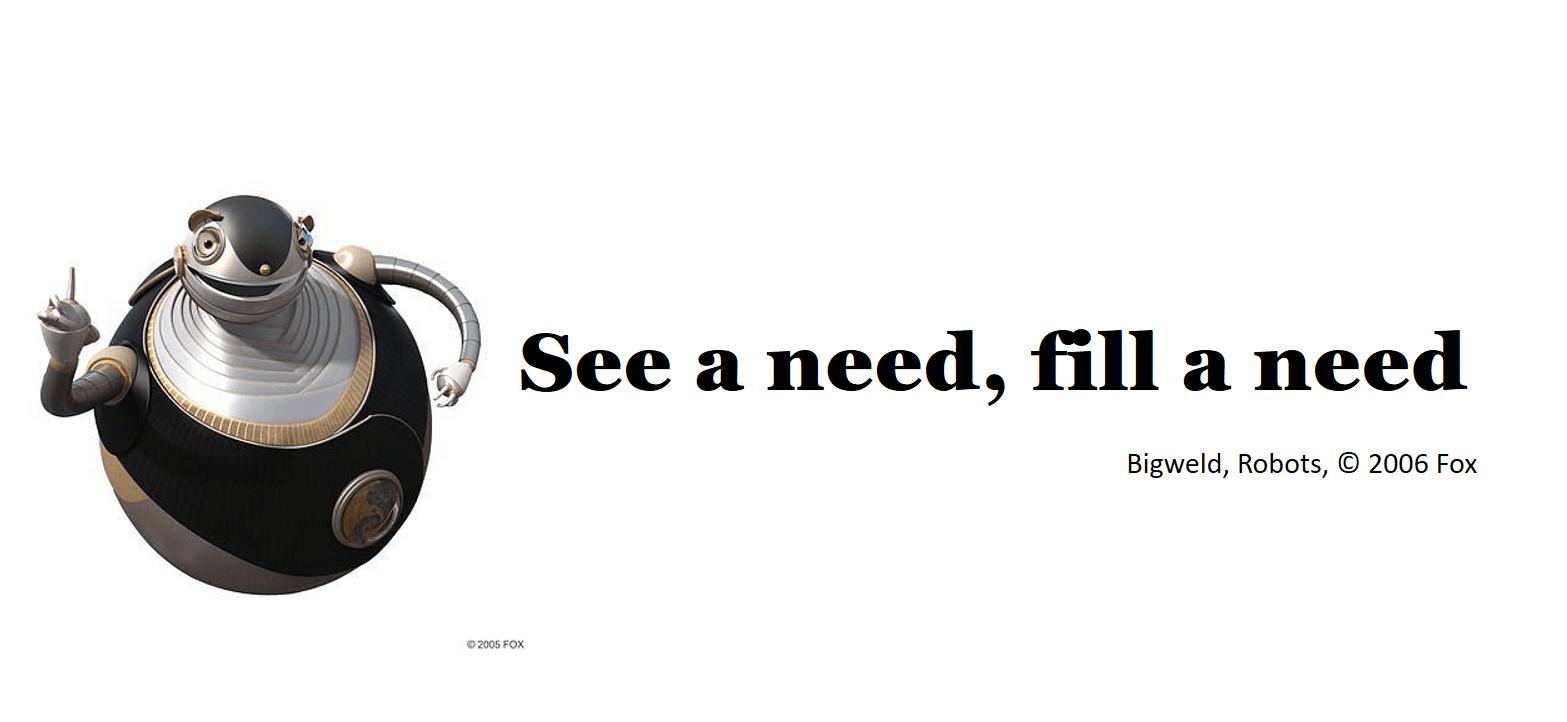Gamification Design Framework toolkit has been created as a way to help you design better gamified solutions. It is based on my Gamification Design Framework, a systematic way of building solutions that I have developed over the years.
design
Emotions and Gamification
You may have noticed in my newest design framework that I mention emotions for the first time (I think) as a full consideration in my design process. I am by no means the first to think about it in a design framework. If you look at the MDA framework 1 the authors describe the aesthetics as:
the desirable emotional responses evoked in the player, when she interacts with the game system.
Later a more gamification focused framework, the MDE framework 2, dropped aesthetics and replaced them directly with emotions.
A Revised Gamification Design Framework
I have created various gamification design frameworks over the years and this is the latest.
It consists of three main phases; Define, Design / Build and Refine. Each phase contains iterative steps to consider as you build your solution.
Big thanks to Roberto M. Alvarez Bucholska for being a great sounding board for some of this!!
Discovery
The discovery phase is all about unearthing the real problem that needs solving and then understanding more about the people you are solving it for. It consists of three mains steps.
Are You Building a Solution Looking for a Problem?
One of the big issues I see in gamification and many young industries is the issue of building a solution for problems that don’t really exist!
“We are using a gamified solution to increase engagement”.
“Awesome, why?”
“Um, because it will increase engagement…”
“Cool, but why, what problem have you identified that can only be solved by investing in gamification?”
“Um…. go away I hate you…”
This happened a lot with social media. Everyone needed to be on Twitter but had no idea why, or how to use it.
Gamification Design Thinking
Another day another framework. This time I can’t really lay claim to it though. This is my interpretation of Design Thinking – a very well know framework! I have mixed it with a few well know lenses for innovation – again, nothing new. It is presented here just as an aid for those who may not already be using it!
First, here is the basic process of design thinking
Step by step:
- Define and understand the actual problem. Very often the initial brief does not hold the problem that needs solving! Question, question and requestion and if needs be, re-frame the problem totally.
- Empathise with the various people involved. Design thinking is all about putting the user first. So consider what types of user you will have, this is not the same as User or Player Types, this is what people need from the system. Who are the users, why are they using the system. What does Mavis, 83 from Wales need compared to Dave, 23 from Leeds? Sometimes it is good to survey potential or current users to get an idea of who they really are and then come up with some average users to role play with! Also, don’t forget the stakeholders needs in this. What do they want to achieve by gamifying the system? How will they react to it and your ideas?
- Ideate – come up with ideas! Propose solutions and then analyse them (more in that in a moment). This is part of an iterative process, at this stage though there is no right answer.
- Experiment with the best ideas. Pretotype and prototype and do it again until you have something you think is worth taking forward.
- Test your pretoype or prototype with the target audience and with the stakeholders. Iterate between testing and experimentation until you are ready to release at least a minimum viable product (MVP). Amy Jo Kim has an amazing course on MVP development actually!
Whilst this is set out as a step by step process, actually it is iterative. At any point you could go back tot he start, but by the time you are into the experimentation phase, you should have a pretty solid idea of where you are going.





